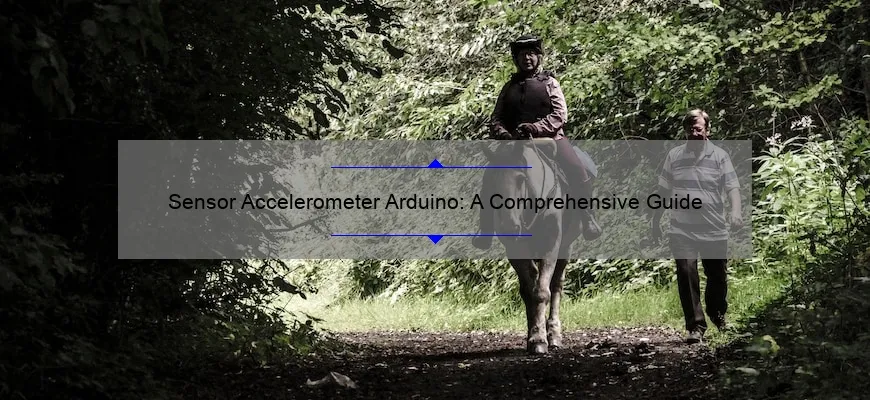- Short answer camera gyroscope gimbal:
- What is a Camera Gyroscope Gimbal and How Does it Work?
- Step-by-Step Guide to Using a Camera Gyroscope Gimbal for Perfect Stabilization.
- Frequently Asked Questions about Camera Gyroscope Gimbals: Everything You Need to Know.
- Choosing the Right Camera Gyroscope Gimbal: Factors to Consider.
- The Benefits of Using a Camera Gyroscope Gimbal for Professional Videography and Photography.
- Tips and Tricks for Maximizing the Performance of Your Camera Gyroscope Gimbal.
Short answer camera gyroscope gimbal:
A camera gyroscope gimbal is a device used to stabilize cameras and eliminate shaky footage. It uses gyroscopes to detect and counteract unwanted movements, allowing for smooth and professional-looking videos.
What is a Camera Gyroscope Gimbal and How Does it Work?
A camera gyroscope gimbal is a cutting-edge device that plays a crucial role in stabilizing cameras and achieving smooth, cinematic shots. Whether you’re an amateur filmmaker or a professional videographer, understanding how this remarkable piece of technology works will undoubtedly elevate your filmmaking skills to new heights. So, let’s delve into the world of camera gyroscopic gimbals and explore their fascinating functionality.
To comprehend the concept behind a camera gyroscope gimbal, we must first define what gyroscopes are. A gyroscope is a device that helps maintain orientation or angular velocity in various mechanical systems. It consists of a spinning wheel or disk mounted on an axis, allowing it to rotate freely in any direction. The principles employed by gyroscopes are based on the laws of physics related to angular momentum and rotational motion.
Now, let’s dive deeper into how these gyroscopes apply to camera gimbals specifically. A camera gimbal typically comprises three brushless motors arranged orthogonally—each responsible for controlling rotation along one axis: pan (horizontal movement), tilt (vertical movement), and roll (lateral movement). These motors work harmoniously with the built-in sensors within the gimbal system.
The gyroscope component within the camera gimbal primarily utilizes an inertial measurement unit (IMU) sensor that consists of accelerometers, magnetometers, and gyroscopes. These sensors enable constant monitoring of the movements of both the camera itself and its supporting platform—the gimbal assembly.
When you turn on your camera with a motorized stabilizer attached—a camera gyroscope gimbal springs into action. The IMU sensors detect unwanted vibrations, tilts, or shakes caused by external factors like walking or panning at uneven speeds. The information captured by these sensors is swiftly transmitted to the onboard microprocessors which then calculate precise adjustments required to counteract those movements.
Utilizing this data, the corresponding motor(s) engage instantaneously to stabilize the camera and maintain its desired position. In simple terms, if you tilt your hand forward while holding a gimbal-mounted camera, the tilt sensor will immediately recognize this change in orientation. It then instructs the motors to compensate by tilting the camera in the opposite direction to maintain stability, ultimately resulting in a seamlessly smooth shot.
The magic behind a camera gyroscope gimbal lies not only in its ability to counteract unwanted movements but also in its astonishing responsiveness and accuracy. With an incredible array of sensors and microprocessors working tirelessly within a split second, it allows filmmakers to capture steady footage on-the-go without compromising quality or creativity.
Additionally, modern gimbals often come equipped with advanced features such as auto-tracking, time-lapse modes, object tracking, and even remote-controlled operation through smartphone apps. These cutting-edge capabilities enhance creative possibilities further and enable filmmakers to achieve stunning shots that were once only imaginable.
In conclusion, a camera gyroscope gimbal is an ingenious invention that revolutionizes cinematography by providing unparalleled stabilization and enabling awe-inspiring shots. By incorporating an intricate combination of gyroscopes, sensors, motors, and microprocessors, these devices actively counteract unwanted movements and vibrations to produce silky-smooth footage. So whether you’re shooting dynamic action sequences or serene landscape shots—the incredible functionality of a camera gyroscope gimbal will undoubtedly take your filmmaking endeavors to new heights!
Step-by-Step Guide to Using a Camera Gyroscope Gimbal for Perfect Stabilization.
Are you tired of shaky and unstable videos ruining your beautiful shots? Don’t worry; we’ve got the solution for you – a camera gyroscope gimbal. This fantastic piece of technology is designed to provide perfect stabilization to your camera, ensuring that every video you capture is smooth, professional, and breathtaking.
But what exactly is a camera gyroscope gimbal, and how can you use it effectively? In this step-by-step guide, we will walk you through the process from start to finish, allowing you to master the art of stabilizing your footage like a pro.
Step 1: Understand How a Camera Gyroscope Gimbal Works
Before diving into the practical aspects, it’s crucial to have a basic understanding of how this ingenious device operates. A camera gyroscope gimbal utilizes three motors that work together using sensor data to stabilize any movement. These motors detect any irregular motion patterns detected by sensors and counteract them in real-time. As a result, your camera smoothly follows your actions while maintaining exceptional stability.
Step 2: Choose the Right Gimbal for Your Camera
Not all gimbals are created equal. It’s vital to find one that suits your specific camera model and weight requirements. Do thorough research or consult professionals in-camera equipment stores who can guide you in making an informed decision.
Step 3: Balance Your Camera on the Gimbal
Proper balancing is essential for optimal performance. Start by turning off the gimbal and adjusting its roll axis until it remains levelled when held horizontally or vertically. Then mount your camera on the gimbal with careful attention paid to its center of gravity. Make sure everything is snugly fastened as any imbalance could negatively impact stabilization results.
Step 4: Power On and Connect
Once everything is securely attached, power on the gimbal following its manufacturer’s instructions. Some gimbals require connecting via Bluetooth or Wi-Fi with an accompanying smartphone app for advanced control. Ensure all connections are stable and functioning correctly before proceeding.
Step 5: Explore the Gimbal Modes
Now it’s time to dive into the various operational modes your gimbal offers. Each mode caters to different shooting scenarios, so familiarize yourself with them thoroughly. For example, a “follow” mode allows the camera to smoothly follow your movements horizontally, while a “lock” mode keeps the camera fixed in one position regardless of your actions.
Step 6: Master Your Movements
Using a gimbal is more than just turning it on and letting it do its job. To achieve truly remarkable footage, you need to practice smooth and deliberate movements with your camera. Whether it’s panning, tilting, or rolling, maintaining steady posture while maneuvering will enhance stabilization results even further.
Step 7: Experiment and Push Boundaries
Once you’ve grasped the basics of using a gyroscope gimbal, don’t be afraid to push the boundaries of your creativity. Try incorporating unique angles, dynamic shots, or daring follow-throughs with your camera movements – the possibilities are endless! Embrace experimentation and let your imagination run wild!
In conclusion, owning a camera gyroscope gimbal is like having your personal professional stabilization assistant – an invaluable tool for capturing stunning videos that leave viewers in awe. By following this step-by-step guide and putting in some practice, you’ll be well on your way to mastering this essential equipment for perfect stabilization. So grab your gimbal today and unleash your inner cinematographer!
Frequently Asked Questions about Camera Gyroscope Gimbals: Everything You Need to Know.
Welcome to our detailed guide on frequently asked questions about camera gyroscope gimbals. In this blog post, we aim to provide you with all the information you need to know about these innovative devices that have revolutionized the world of videography and photography. From explaining what a camera gyroscope gimbal is and how it works, to discussing its benefits and addressing common concerns, we’ve got you covered. So, let’s dive in!
1. What is a camera gyroscope gimbal?
A camera gyroscope gimbal is a device used to stabilize cameras or smartphones during video recording or photography. It utilizes advanced technology, including gyroscopes and motors, to counteract any unwanted movement or shakes while capturing footage.
2. How does a camera gyroscope gimbal work?
The gimbal system inside the device operates on three axes – pitch (up and down), yaw (left and right), and roll (tilt). It detects any movement made by the user holding the gimbal and compensates for it by moving in the opposite direction using its motors. This stabilization results in smooth, professional-looking videos or photos.
3. What are the advantages of using a camera gyroscope gimbal?
Using a camera gyroscope gimbal offers several benefits:
a) Eliminates shaky footage: The primary advantage is its ability to eliminate unwanted shakes and jitters from your videos, providing smooth cinematic results.
b) Professional-quality shots: With enhanced stability, you can capture professional-grade shots comparable to those seen in movies or documentaries.
c) Versatility: Camera gimbals are highly adaptable; they can be used with various cameras, smartphones, or even action cameras like GoPro.
d) Ease of use: These devices are designed with user-friendliness in mind – just mount your camera/smartphone correctly and start shooting!
4. Are camera gimbals suitable for all types of cameras?
Absolutely! Most modern camera gimbals are designed to accommodate a wide range of cameras, from compact point-and-shoots to professional DSLRs. Additionally, there are smartphone-specific gimbals catering to mobile videography enthusiasts.
5. Are camera gimbals only for videography or can they benefit photographers too?
While camera gimbals are mainly associated with videography, they can also greatly benefit photographers. Gimbals provide stability during long-exposure shots, time-lapses, or when shooting in challenging environments where vibrations could affect image quality.
6. Do camera gimbals have any limitations?
Camera gimbals do have a few considerations to take into account:
a) Weight restrictions: Different models may have weight limitations for optimal performance; make sure your camera falls within the recommended capacity.
b) Balancing: Properly balancing your camera on the gimbal is crucial for seamless operation and avoiding strain on motors.
c) Power source: Camera gimbals require power to operate their motors; it’s important to ensure you have sufficient battery life or access to power sources during longer shoots.
In conclusion, camera gyroscope gimbals offer an incredible solution for stabilizing your videos and enhancing photography. They eliminate shaky footage, provide professional-level results, and are compatible with various cameras and smartphones. Whether you’re a vlogger, filmmaker, or simply someone looking for higher-quality footage or images – investing in a camera gimbal will undoubtedly elevate your visual content creation game!
Choosing the Right Camera Gyroscope Gimbal: Factors to Consider.
Choosing the Right Camera Gyroscope Gimbal: Factors to Consider
In today’s photography and videography industry, capturing smooth footage is no longer a luxury but a necessity. Whether you’re a professional filmmaker or an amateur enthusiast, investing in the right camera gyroscope gimbal can greatly enhance your shooting experience. However, with a multitude of options available on the market, it can be overwhelming to decide which one suits your needs best. Fear not! We’ve prepared this comprehensive guide to help you navigate through the plethora of choices and make an informed decision.
1. Stability reigns supreme:
The primary purpose of a camera gyroscope gimbal is to stabilize your footage by counteracting unwanted shakes and vibrations. Therefore, stability should be at the top of your list when evaluating potential gimbals. Look for models that boast advanced stabilization technologies such as 3-axis stabilization systems or brushless motors to ensure silky-smooth shots even in challenging shooting conditions.
2. Payload capacity matters:
Consider the weight and size of your camera setup before making any purchase decisions. Different gimbals have varying payload capacities, which determine how much weight they can effectively stabilize. You don’t want to invest in a gimbal only to find out it can’t support your equipment adequately, leading to shaky shots or even damaging your gear.
3. Versatility for various shooting scenarios:
Do you primarily shoot handheld videos or often mount your camera on other devices such as drones or jibs? Opt for a camera gyroscope gimbal that offers versatility in mounting options for different shooting scenarios. Some gimbals come with detachable handles or interchangeable mounts, allowing you to adapt quickly and effortlessly.
4. Battery life endurance:
Imagine being in the midst of an exciting filming session only for your gimbal’s battery to die abruptly! To avoid such predicaments, consider a model with an extended battery life capable of lasting throughout extended shoots without interruptions. Moreover, having a gimbal with quick charging functionality can save you valuable time when you’re on the go.
5. Ease of use and control:
While gimbals are sophisticated pieces of technology, choosing one that is user-friendly and intuitive to operate can significantly enhance your overall shooting experience. Look for models that come with app compatibility or user-friendly interfaces, enabling you to customize settings and easily control various features.
6. Build quality and durability:
Investing in a robustly built camera gyroscope gimbal is essential for long-term usage and protection against accidental drops or mishaps during shoots. Aluminum alloy frames or carbon fiber construction often offer durability without compromising on weight – ideal for frequent filmmakers who value both stability and portability.
7. Budget considerations:
Of course, budget cannot be ignored when making any purchasing decisions. Set a realistic budget range before browsing through options to narrow down your choices further. Keep in mind that investing in quality equipment often translates into superior performance and longevity, but there are also affordable options available that cater to specific needs without breaking the bank.
By considering these factors thoroughly, you’ll be well on your way towards finding the perfect camera gyroscope gimbal to elevate your videography skills and capture mesmerizing visuals like never before. Happy shooting!
The Benefits of Using a Camera Gyroscope Gimbal for Professional Videography and Photography.
With the rapid advancements in technology, videography and photography have become more accessible to a wider audience. Capturing stunning visuals has never been easier, thanks to devices like camera gyroscopes gimbals. These innovative tools are rapidly revolutionizing the world of professional videography and photography. In this blog post, we will explore the various benefits that using a camera gyroscope gimbal can offer to professionals in these fields.
1. Enhanced Stability for Smooth Shots:
One of the key advantages of utilizing a camera gyroscope gimbal is its ability to provide enhanced stability for capturing perfectly smooth shots. This device effectively counteracts any unwanted movements or shaking, ensuring that your footage remains steady even during movements or vibrations. With a gyroscope gimbal, gone are the days of shaky footage that distracts viewers from your creative vision.
2. Professional-Grade Quality:
When it comes to producing high-quality visual content, using a camera gyroscope gimbal is an absolute game-changer. This tool allows you to achieve cinematic-like shots with ease, providing your videos and images with a professional-grade touch. By eliminating jerky motion and maintaining stable framing throughout your shots, you can elevate your work to new heights and leave a lasting impression on your audience.
3. Versatility for Creative Freedom:
Camera gyroscopes gimbals offer immense versatility when it comes to exploring different angles and perspectives. These devices enable photographers and videographers to experiment with unique angles by smoothly panning or tilting their cameras without compromising stability or quality. Whether you’re shooting from ground level or above eye-level, a camera gyroscope gimbal empowers you with unparalleled creative freedom.
4. Compactness and Portability:
In addition to their technical advantages, camera gyroscopes gimbals also excel in terms of portability and convenience. Unlike large stabilization systems from the past, modern-day gimbals are compact and lightweight without compromising functionality or performance standards. This means that professionals no longer need to carry heavy equipment or sacrifice flexibility while capturing stunning shots on the go.
5. Increased Efficiency and Time-Saving:
Efficiency is a crucial aspect of any professional’s workflow, and camera gyroscopes gimbals can significantly boost productivity in videography and photography. With enhanced stability and smoothness offered by the gimbal, reshoots due to shaky footage become rare occurrences. This saves precious time during post-production processes, allowing you to focus more on creativity and overall project management.
6. Wide Compatibility:
Regardless of your camera brand or model, a vast majority of camera gyroscopes gimbals offer wide compatibility with various devices. This means that you don’t have to worry about finding a gimbal specifically designed for your camera setup; chances are high that it will work seamlessly with your preferred gear. This cross-compatibility further enhances convenience and adaptability for professionals at all levels.
In conclusion, embracing the use of camera gyroscope gimbals in professional videography and photography brings numerous benefits to their practitioners. From providing enhanced stability and professional-grade quality to enabling creative freedom and saving time, these intelligent tools prove invaluable in capturing breathtaking visuals. If you’re a professional in these fields who values excellence in their work, investing in a camera gyroscope gimbal is undoubtedly a wise decision!
Tips and Tricks for Maximizing the Performance of Your Camera Gyroscope Gimbal.
Title: Unleashing the True Potential of Your Camera Gyroscope Gimbal: Expert Tips and Clever Tricks
Introduction:
Camera gimbals equipped with powerful gyroscope technology have revolutionized the way we capture photographs and videos, allowing us to achieve stunningly smooth footage even in challenging shooting conditions. However, operating these sophisticated devices to their fullest potential requires a firm grasp on both technical know-how and artistic finesse. To help you unlock the maximum performance of your camera gyroscope gimbal, we’ve curated a collection of professional tips, clever tricks, and witty advice that will elevate your videography skills to new heights!
1. Understand Your Gimbal Inside Out:
Before diving into advanced techniques, ensure you have a thorough understanding of how your camera gyroscope gimbal operates. Study the user manual extensively; familiarize yourself with its unique features, modes, and configurations. This foundational knowledge will set the stage for mastering more complex maneuvers.
2. Calibrating Perfection:
Calibration is paramount for optimal gimbal performance – it ensures accurate stabilization and responsiveness. Take time to balance your camera meticulously on the gimbal by adjusting each axis until it remains level without any tilts or vibrations when powered on. Regularly recalibrate as needed since environmental factors such as temperature can affect stability.
3. The Handle Grip Matters:
Achieving steady shots often depends on how well you grip the handle of your gimbal during operation. Hold it lightly to allow for natural movement while maintaining control over rapid motions—think sensual dance moves rather than robust gym workouts!
4. Mastering Basic Movements:
Start by practicing basic movements like panning side-to-side, tracking subjects from low to high angles or vice versa, tilting up and down smoothly—all while keeping the horizon level throughout shots.
5. Experiment with Creative Angles:
Once you’re comfortable with the basics, push your creative boundaries by exploring unconventional angles and perspectives that would be impossible without a gimbal. Capture dynamic shots by walking backwards or sideways, crouching low to the ground, or even shooting from above.
6. Speed and Smoothness Balance:
Finding the right balance between gimbal speed settings and smoothness is crucial for achieving cinematic footage. Adjust the speed according to the complexity of the shot: slower movements for intimate scenes, faster speeds for action-packed sequences. Experiment with different settings until you strike the perfect equilibrium.
7. Adding Visual Flair with Swipes:
Introduce visual interest by incorporating swipe motions into your shots. Practice elegant swipes in either direction to add a touch of flair when transitioning between subjects or capturing scene changes smoothly.
8. Unlocking Hyperlapse Marvels:
Transform ordinary landscapes into awe-inspiring hyperlapsing masterpieces! By moving slowly while capturing photos at regular intervals —using your camera‘s built-in intervalometer or dedicated apps— you can stitch them together later to create breathtaking time-lapse videos full of dramatic movement.
9.Incorporating Filmmaking Techniques:
Gimbals offer an excellent opportunity to experiment with professional filmmaking techniques such as dolly shots (forward/backward movements), crane shots (vertical movements), and even simulated jib arm-like motions. Combine these tricks effectively with stable footage to infuse your visuals with a touch of Hollywood magic.
10. Taming Windy Conditions:
Windy days can pose a challenge for stable footage capture, no matter how advanced your gimbal is. To combat this, employ clever tricks like planting yourself behind obstacles, utilizing windbreakers, or simply reducing height when possible—all while maintaining smooth panning and subject tracking.
Conclusion:
Mastering the art of shooting with a camera gyroscope gimbal demands both technical expertise and artistic vision. By following these tips and integrating clever tricks into your workflow, you’ll maximize the potential of your gimbal and elevate your videography skills significantly. Embrace the world of untapped creativity, experiment fearlessly, and soon you’ll be capturing breathtaking footage that leaves your audience in awe. So grab your gimbal, let your imagination soar, and revolutionize the way you record life’s most incredible moments!








